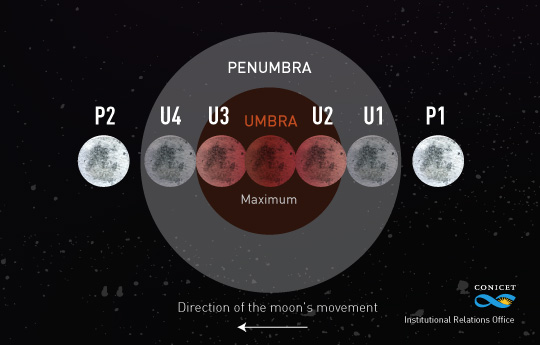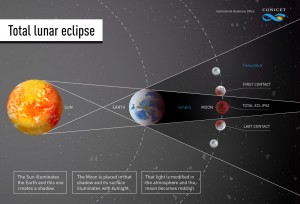Exact and Natural Sciences
The colour that will shine in the sky
Eclipsed, rounded and red, the moon will be stared by millions of people on September 27th.
Next Sunday night, between 11:30 p.m. and 1:00 a.m., local Buenos Aires’ time, there is going to be a lunar eclipse, i.e. the Sun, the Earth and the Moon will form a straight line. The full moon, that will be at an unusually near distance from the Earth, will pass through its shadow, first partially and then forming an eclipse. The moment the Moon transits the shadow projected by the Earth, it will only receive the red part of the sunlight spectrum, because it is the colour most diverted in the atmosphere of the planet and the only one capable of reaching the satellite.
It will be the last of the four that belong to a phenomenon known as tetrad and that took place every six months approximately. The cycle involves four “Blood Moons” and it began on April 15th, 2014, the second on October 8th during the same year; the third one, on April 4th 2015; and finally the last one will be observed this month.
Mario Melita, CONICET independent researcher at the Instituto de Astronomía y Física del Espacio (IAFE, CONICET-UBA) [Institute for Astronomy and Space Physics], explains that during an eclipse, two types of shadows emerge: first the penumbra, which is not a total blackout and that will occur next Sunday between 10:00 and 11:00 p.m., and 00:30 and 01:30 a.m. The second shadow, the umbra, is darker and reddish. It is produced when there is a total eclipse and is going to occur between 11:00 p.m. and 00:30 a.m.
For the researcher, “in our planet, it is necessary to be in an appropriate place to watch the shadow of the Earth covering the Moon because it cannot be observed from any point. Next Sunday we will have to have the chance to watch this natural phenomenon from this part of the continent; and depending on the air pollution, the moon will be more or less reddish”, he explains.

